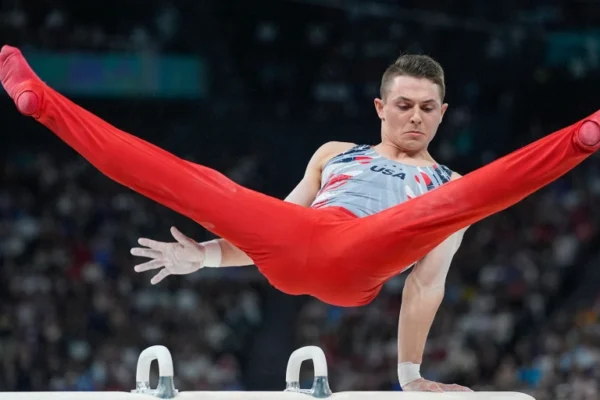What are Y2K Outfits?
The term “Y2K outfits” refers to the unique fashion style that emerged in the late 1990s and became particularly popular during the early 2000s. This aesthetic represents a distinctive blend of comfort, nostalgia, and boldness, often drawing heavily from the era’s pop culture and technological advancements. The rise of the internet and mobile technology during this time significantly influenced trends, creating a unique landscape where fashion was both a reflection of societal shifts and a vehicle for individual expression.
At the heart of Y2K fashion are key characteristics that defined the period. Bright, bold colors were a staple, with outfits frequently incorporating vibrant hues, metallic finishes, and playful prints. This playful approach often featured whimsical patterns such as abstract graphics, floral motifs, and psychedelic designs. High-energy styles were complemented by distinctive accessories, including iconic items like butterfly clips, chokers, and slap bracelets. Notably, chunky sneakers became a must-have footwear choice, linking comfort with a trendy aesthetic that prevailed throughout this vibrant era.
The Y2K style is emblematic of a time when individuality and self-expression were paramount, resonating particularly with younger generations. The blending of casual and bold elements in Y2K outfits encourages wearers to experiment with their style, combining various textures and layers to create an outfit that speaks to their personality. As modern fashion experiences a revival of early 2000s trends, many are revisiting and reinterpreting Y2K outfits, highlighting the lasting influence of this eclectic and dynamic period in fashion history.
The Rise of Y2K Fashion in Modern Trends
The resurgence of Y2K outfits in contemporary fashion is a notable phenomenon, captivating the attention of both designers and consumers alike. Originating from the early 2000s, this trend has made a significant comeback, largely influenced by social media platforms such as TikTok and Instagram. These platforms serve as catalysts for style revival, where users frequently share content that celebrates nostalgia. As younger generations engage with this content, they have rekindled an interest in Y2K aesthetics that blends past and present fashion sensibilities.
Influencers and celebrities play a crucial role in this revival, often showcasing Y2K outfits that echo the playful and experimental spirit of the early 2000s. Numerous social media figures have taken to their channels to share their interpretations of these iconic styles, from low-rise jeans and butterfly clips to colorful crop tops and platform shoes. This wave of popularity has driven brands to reintroduce and reimagine classic pieces, making them accessible to the modern consumer. For instance, various contemporary labels have launched collections inspired by early 2000s fashion, integrating elements like shiny materials and bold prints, effectively merging nostalgia with current trends.
Moreover, the influence of Y2K aesthetics can also be seen in various fashion shows and magazine spreads, where designers intentionally incorporate these elements into their collections. Brands such as ALOHAS and Nasty Gal have embraced this trend wholeheartedly, releasing garments that reflect the whimsical, eclectic vibe synonymous with Y2K outfits. By tapping into this rich vein of nostalgia, they are not only appealing to older consumers who reminisce about their youth but also attracting new customers eager to explore this distinctive style. The intertwining of Y2K fashion with modern trends exemplifies the cyclical nature of fashion, highlighting how the past continually influences contemporary aesthetics.

How to Style Y2K Outfits
Styling Y2K outfits effectively requires an understanding of the distinctive features that define this nostalgic fashion trend. The early 2000s were characterized by bold colors, playful accessories, and an inclination towards mixing and matching various styles. To achieve that quintessential Y2K look, one must consider layering techniques, color coordination, and the selection of essential pieces.
A cornerstone of the Y2K aesthetic involves layering. Start with a fitted top, such as a graphic tee or a cropped tank, and add a lightweight cardigan or a denim jacket. Pair these with low-rise jeans or a skirt with a flared silhouette. It is essential to play with lengths and textures; incorporating a mesh top or sheer fabrics can add an interesting element to your outfit. For an evening look, consider layering with a fun, statement belt to accentuate the waist and enhance the silhouette.
Color coordination is equally vital in achieving that early 2000s vibe. Think bold pastels, vibrant primary colors, or even glossy materials. Mixing bold patterns, such as stripes with florals, or pairing different textures adds a playful edge to your ensemble. Accessories are also crucial; a bucket hat, colorful sunglasses, or platform sneakers can elevate the overall look, making it authentically Y2K.
When considering pieces to invest in, look for iconic items such as cargo pants, butterfly clips, and oversized graphic sweatshirts. For authentic Y2K styles, both online and thrift shopping are excellent avenues. Websites like Depop and Poshmark curate a variety of early 2000s garments, while local thrift stores often harbor hidden gems waiting to be discovered.
To inspire readers, consider various occasions where Y2K outfits can shine. A casual outing might call for a pair of baggy jeans paired with a cropped hoodie, while a music festival can be the perfect opportunity to don a mini skirt with combat boots and layered tank tops. By incorporating these styling techniques, anyone can seamlessly embrace Y2K fashion into their wardrobe.
Y2K Outfits: A Cultural Reflection
The emergence of Y2K outfits, characterized by their vibrant colors, unconventional silhouettes, and playful accessories, is emblematic of a unique cultural moment that reflects a yearning for nostalgia. This fashion movement, rooted in the early 2000s, serves as a window into the societal shifts of that era, representing a broader narrative of self-exploration and identity. One of the most compelling aspects of Y2K attire is its strong connection to the digital age, which has significantly influenced personal style. The rapid proliferation of technology during this period encouraged a sense of individuality, encouraging people to embrace unconventional choices in their appearances.
Y2K outfits symbolize a departure from the minimalist aesthetics that dominated previous decades, showcasing a playful spirit that resonates with themes of self-expression. The eclectic mix of styles—from low-rise jeans paired with crop tops to flashy accessories—mirrors the novelty of a generation that sought to carve out its identity against a backdrop of rapidly changing social norms. Moreover, the emergence of the internet and digital platforms allowed young people to share their fashion choices, further fostering a culture of creativity where personal style could flourish unbounded by traditional constructs.
The allure of Y2K fashion lies in its ability to evoke a sense of longing for simpler times while simultaneously embracing modernity. As we continue to witness the resurgence of Y2K outfits in contemporary fashion, it becomes increasingly clear that these looks transcend mere aesthetics—they encapsulate an era marked by exploration, freedom, and bold expressions of self. By appreciating the cultural implications of Y2K fashion, we can connect with a distinctive chapter in style history, understanding how it shapes and informs current trends while serving as a testament to the enduring power of fashion as a form of personal storytelling.



